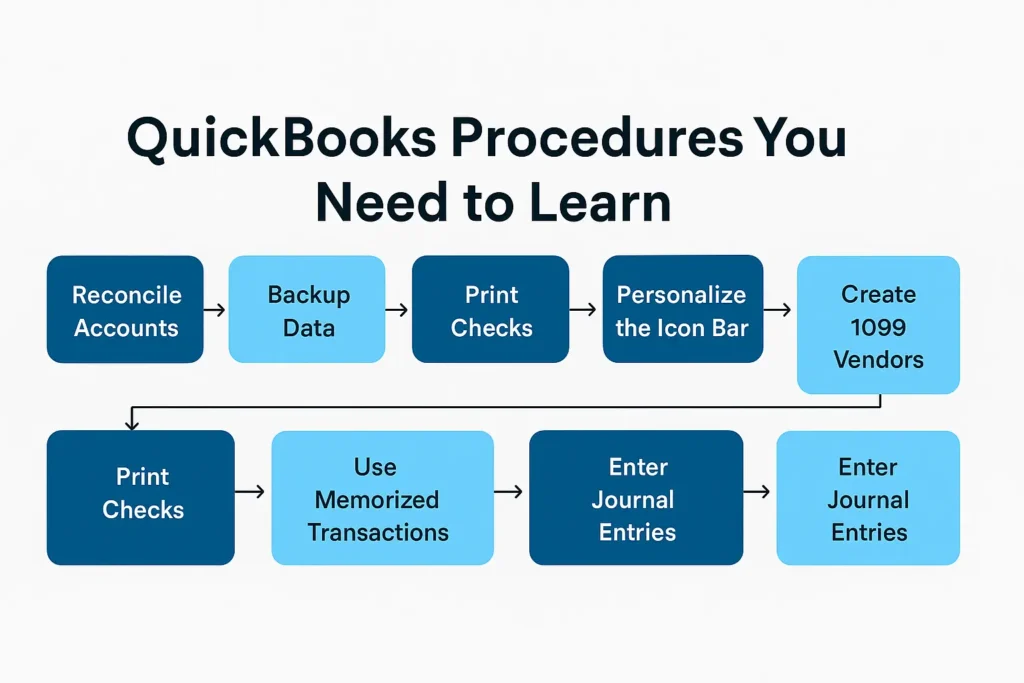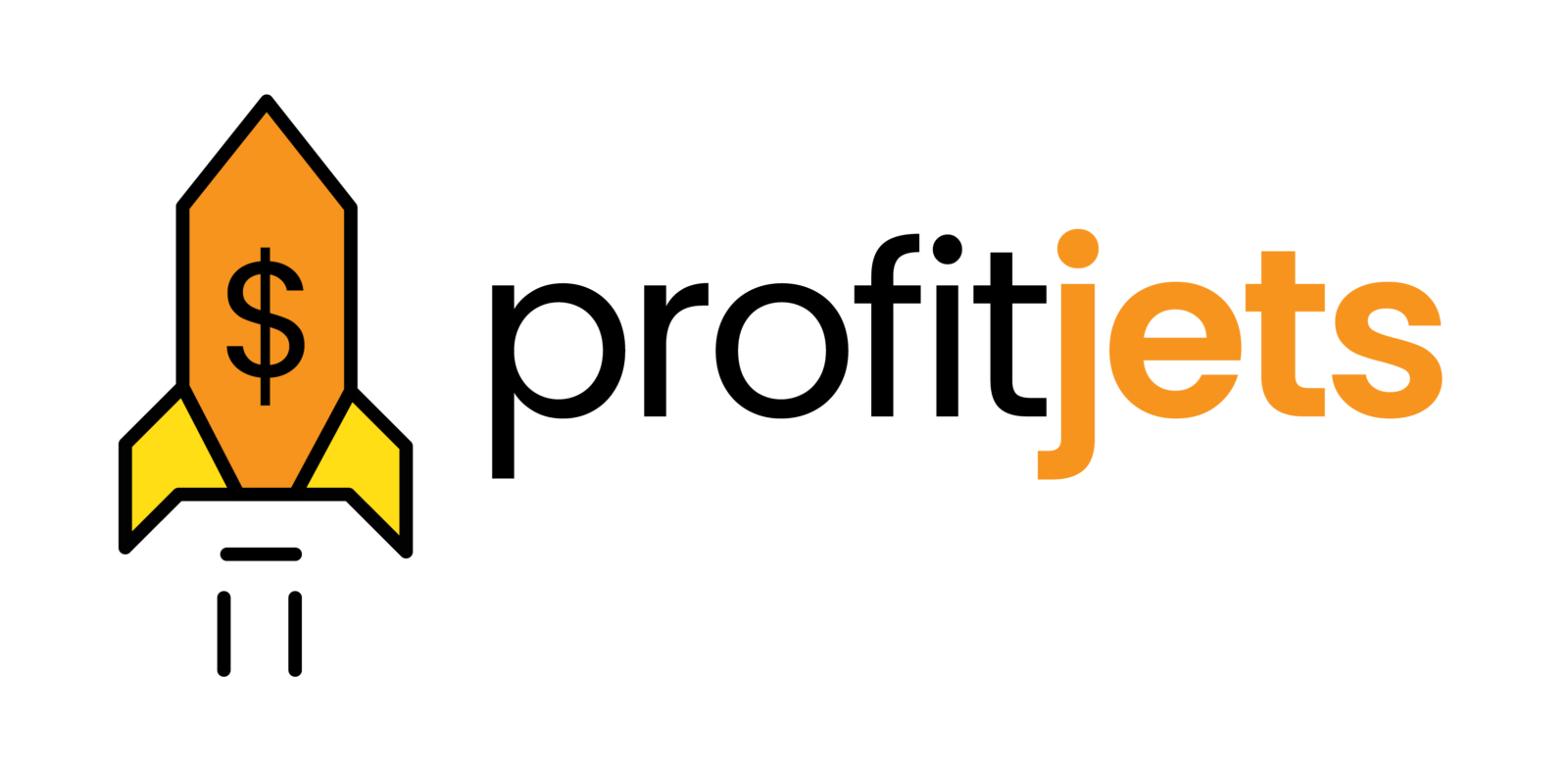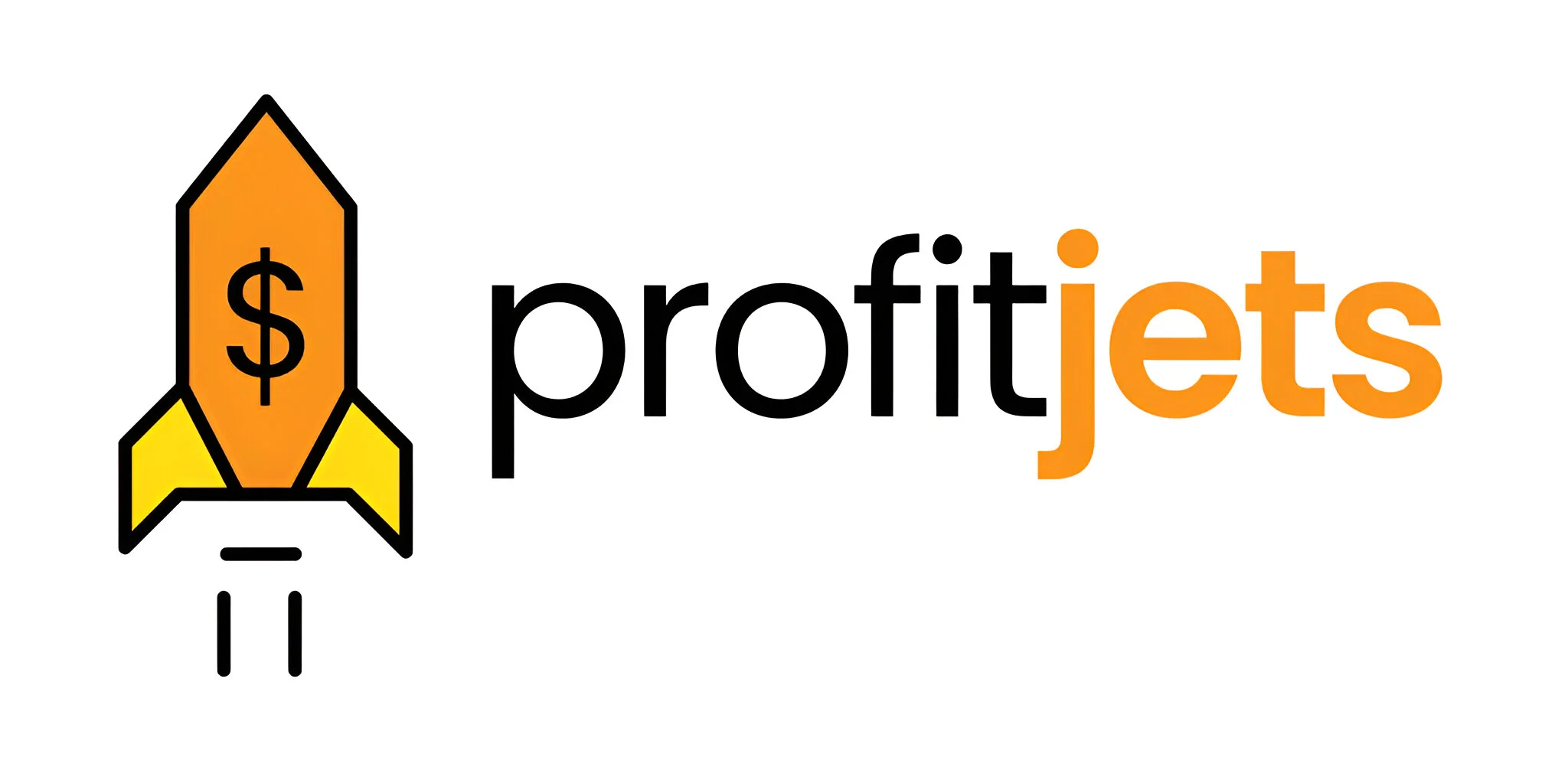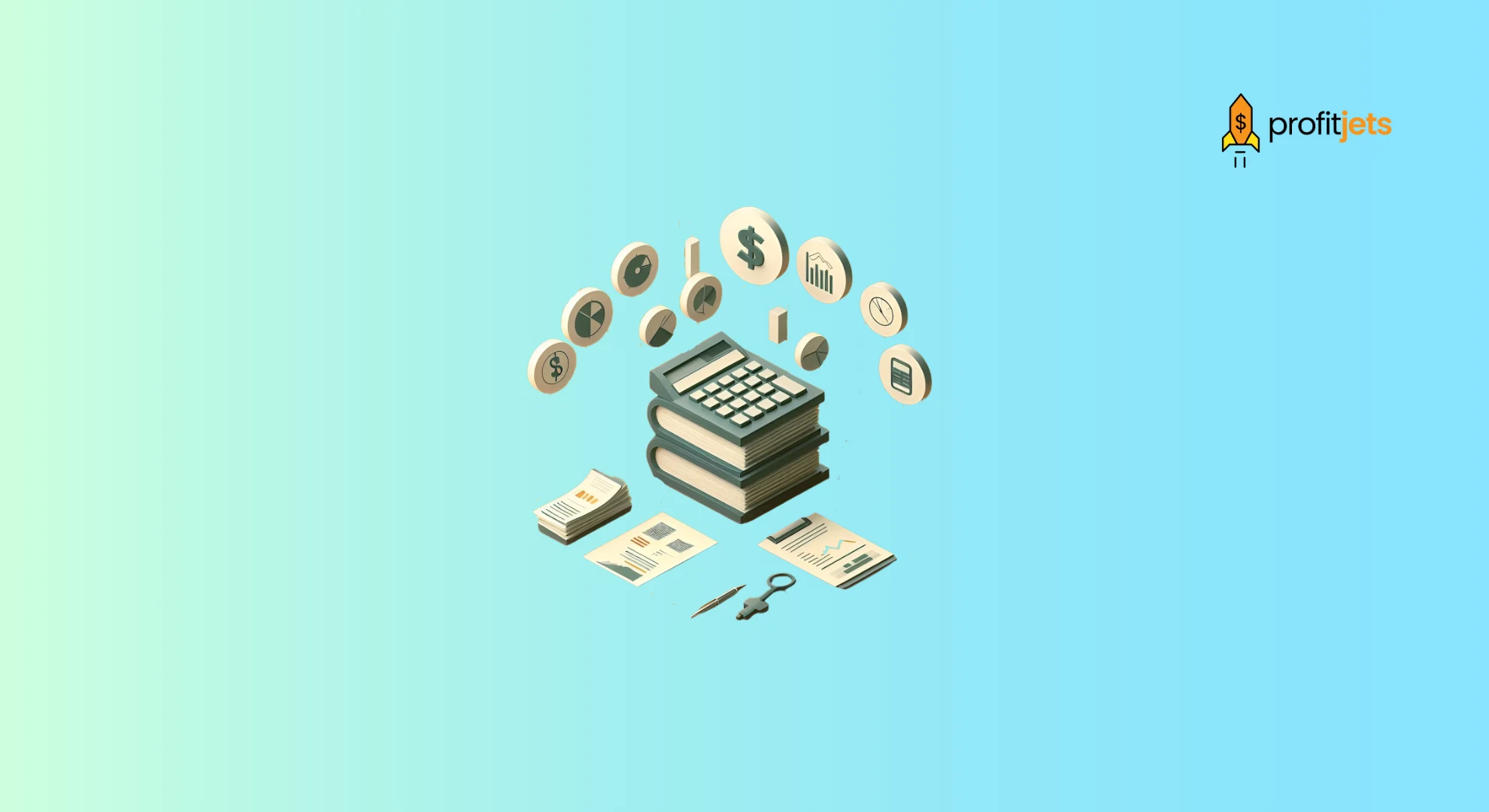QuickBooks Online is one of the most efficient tools for small business accounting, and if you’ve just started using it, congratulations on a wise choice! However, as a new user, the range of features may feel overwhelming.
To help you navigate with confidence, this guide breaks down 25 essential QuickBooks procedures every user should learn. Implementing these optimal strategies will enhance your efficiency, increase precision, and simplify your financial processes.

Table of Contents
25 Essential QuickBooks Procedures You Need To Learn
1. Reconcile Your Accounts
Always reconcile your bank, credit card, loan, and line of credit accounts monthly to ensure accuracy.
2. Back Up Your QuickBooks Data
QuickBooks Online automatically stores your data in the cloud, but it’s still a good idea to create manual backups for important information.
3. Print QuickBooks Checks
Improve efficiency and avoid duplicate data entry by printing checks directly from QuickBooks.
4. Enter & Pay Bills in QuickBooks
Track accounts payable accurately. Use built-in bill payment features or sync with online banking.
5. Customize the QuickBooks Icon Bar
Boost efficiency by placing frequently used features front and center.
6. Set Up 1099 Vendors
Properly categorize independent contractors early to avoid year-end confusion.

7. Use the ‘Ask My Accountant’ Account
Temporarily categorize unclear transactions here for later review with your accountant.
8. Understand Undeposited Funds
This account temporarily holds payments received until they’re deposited in the bank.
9. Memorize Recurring Transactions
Use memorized transactions to automate bills, invoices, and journal entries.
10. Enter Journal Entries
Understand when and how to record journal entries for complex transactions.
11. Use QuickBooks Online Banking
Download and categorize transactions from your bank accounts automatically.
12. Create Multiple QuickBooks Users
Grant varying access levels to different team members for improved control.
13. Learn the Chart of Accounts
Master account types and how to organize your financial records accurately.
14. Enable Online Bill Payments
Add ACH transfer options to streamline client payments, with minimal transaction fees.
15. Integrate Email with QuickBooks
Connect Gmail, Outlook, or Yahoo for faster billing and report sharing.
16. Merge Duplicate Accounts
Clean up your records by merging redundant vendors, customers, or accounts.
17. Modify QuickBooks Preferences
Tailor settings to suit your business needs and improve workflow.
18. Record Outsourced Payroll Correctly
Ensure third-party payroll data is logged accurately to avoid skewed reports.
19. Use the Find Feature in QuickBooks
Locate incomplete transactions or missing data with ease.
20. Implement Class Tracking
Segment your data by department, location, or revenue source for better reporting.
21. Job Costing for Projects
Track income and expenses by job for deeper project profitability insights.
22. Monitor Accounts Receivable
Keep your AR clean and up-to-date to maintain healthy cash flow.
23. Track Inventory Properly
Use built-in tools or integrations to manage your inventory efficiently.
24. Customize QuickBooks Reports
Design personalized reports that match your business metrics—and memorize them for quick access.
25. Learn the Basics of QuickBooks
Start with video tutorials or official QuickBooks training to grasp core concepts.

Final Thoughts
Mastering QuickBooks procedures can dramatically improve your business’s financial health. These 25 techniques form a strong foundation for confident bookkeeping.
Accordion Heading
Accordion Content
1. What are the most important QuickBooks procedures for beginners?
Start with reconciling accounts, entering and paying bills, setting up 1099 vendors, and learning how to categorize transactions accurately.
2. How do I back up my QuickBooks Online data?
QuickBooks Online auto-saves in the cloud, but you can manually export reports and data or use third-party apps for extra backup.
3. What is the ‘Ask My Accountant’ account in QuickBooks?
It’s a temporary account to categorize unclear transactions until your accountant reviews them—perfect for unknown or complex entries.
4. How do I merge duplicate accounts or vendors in QuickBooks?
Edit the duplicate record and rename it exactly to match the primary one—QuickBooks will prompt you to merge them.
5. Can I automate recurring transactions in QuickBooks?
Yes, use the “Recurring Transactions” feature to auto-create invoices, bills, or journal entries at set intervals.










